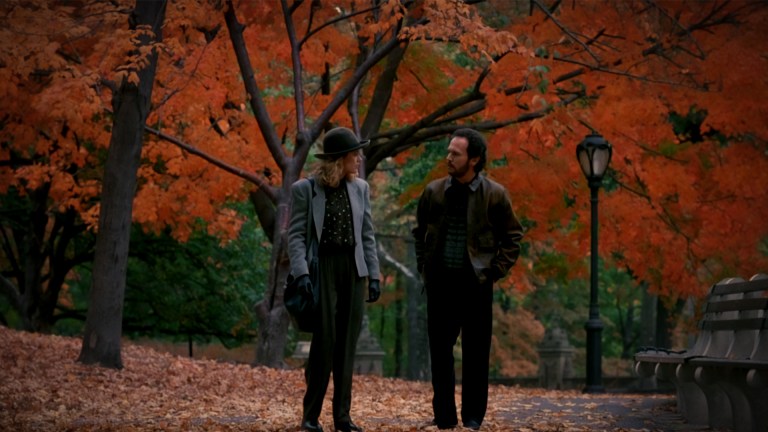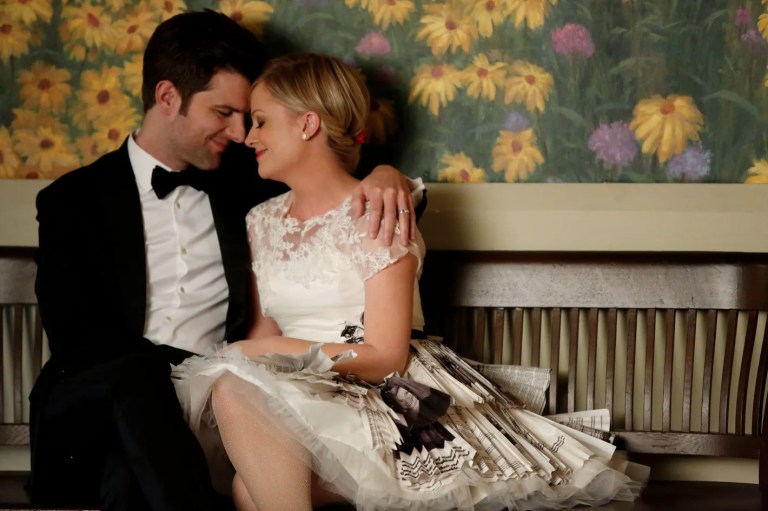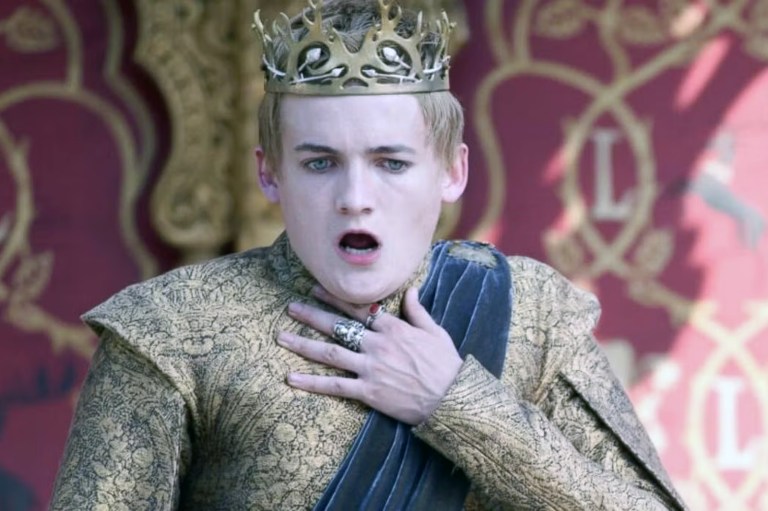
22 Little-Known Facts About ‘Seinfeld’
Festivus was actually not created by George's father, Frank Costanza. The fake holiday was created well before the series was even conceived in 1966 by an editor of Reader's Digest named Dan O'Keefe, who created it to celebrate the anniversary of his first date with his wife.
1. Newman doesn’t have a first name (surprise). A common speculation is that his first name is “Norman,” because in the episode “The Bottle Deposit, Part 2,” (season 7, ep. 2) the farmer’s daughter shouts, “Goodbye, Norman!” This was actually the actress’s mistake — she mistook “Newman” for “Norman” in the script. Seinfeld‘s producers found the mistake funny, so they kept the error. Newman is elsewhere ‘officially’ considered only “Newman” when he goes to court and the judge refers to him as Mr. Newman. In the episode “The Package,” (season 8, ep. 5) his business card is shown — it reads, simply, “NEWMAN.”
2. Technically, Newman made his debut appearance in the seventh episode of the second season, but the role was voice only, and was portrayed by series co-creator Larry David. Newman first appeared in physical form in the episode “The Suicide,” which aired as the fifteenth episode of the third season.
3. Festivus was actually not created by George’s father, Frank Costanza. The fake holiday was created well before the series was even conceived, in 1966, by an editor of Reader’s Digest named Dan O’Keefe, who created it to celebrate the anniversary of his first date with his wife. Festivus came to the script of Seinfeld by way of O’Keefe’s son, who was working as a writer of the show. The aluminum pole was the writer’s own artistic spin on Festivus.
4. Jerry’s address is mentioned numerous times in the series as 129 W. 81st street (despite the error that the awning of the building says “757”) — squarely located in Manhattan’s Upper West Side. This address is an avenue and a half west of Central Park, and basically across the street from the the Museum of Natural History. However, establishing shots of the exterior were that of a building in Los Angeles. Real-life Jerry actually owns a building called The Beresford at 211 Central Park West — about a block away from his former fictional locale.
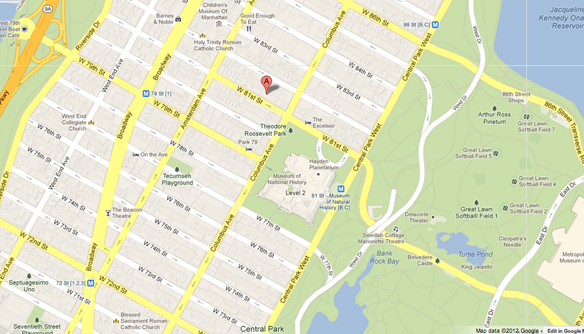
5. The very first (and only?) episode in which George Costanza’s character does not appear is “The Pen” (season 3, ep. 3). In an interview with Access Hollywood, Jason Alexander describes this incident as one of the “few” problems he ever had with series creator Larry David. Worried that he was unneeded and on the path to being written out of the show permanently, Alexander confronted David, saying, “Larry if you do it again, do it permanently.” He had the confidence to confront David, he says, because the show was not yet a hit, and Alexander had uprooted his career for it. In the Access Hollywood interview, Alexander says “The Pen” is part of the first season, but it’s actually a part of the third.
6. Jerry Seinfeld initially offered the role of George Costanza to Jake Johannsen, a critically acclaimed stand-up comedian whose HBO comedy special This’ll Take About an Hour was listed as one of People magazine’s 10 Best Television Shows in 1992. Johannsen refused the role, despite being “begged” by Jerry. Johannsen is a favorite act on the David Letterman Show, and starred in his second comedy special called I Love You in 2010, which aired on Showtime.
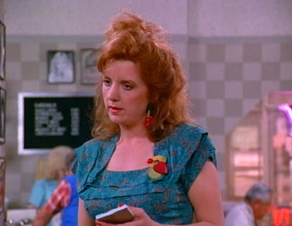
7. Elaine’s character wasn’t originally cast. Seinfeld‘s first conception of the ‘woman’ role was a sassy waitress named Clair played by actress Lee Garlington. After the pilot was filmed, however, the creators felt Garlington wasn’t a good fit and began seeking replacement roles/ actresses. Since then, Garlington has guest starred in many popular TV series, including The West Wing, 7th Heaven, 8 Simple Rules, CSI: Crime Scene Investigation, Judging Amy, Will & Grace, L.A. Law, The Practice, Quantum Leap, Home Improvement, Boston Legal, Roseanne, Get a Life, Profiler, Medium, and Lie to Me.
8. Elaine’s and Julia Louis-Dreyfus’s lives couldn’t have been more different. While Elaine dates what amounts to a melting pot of single men in Seinfeld, Louis-Dreyfus married at age 20 (before Seinfeld began) to former Saturday Night Live comedian Brad Hall (who went on to create the shows The Single Guy and Watching Ellie) and has lived happily ever after. Of Elaine, Louis-Dreyfus told New York Magazine “She’s nuts. The woman’s nuts … I’m sure it’s a self-esteem problem. I mean, she’s hanging out with these three guys, in that ratty apartment — where’s the self-esteem there?” The interviewer of the NYMag piece describes Louis-Dreyfus as “disdainful” of Elaine, but to me the interaction reads more dismissive and fun.
9. While most know that Larry David modeled the George Costanza character after himself, most are unaware that the character is named after Jerry’s friend, Mike Costanza. Mike Costanza would later sue Seinfeld, David, and NBC for $100 million, claiming invasion of privacy and defamation of character. The case was dismissed.
10. Larry David’s most famous voice-role in Seinfeld was that of Yankees-owner George Steinbrenner, but he also voiced characters who served as functional extras as well as comedic cameos. Notable characters he voiced for Seinfeld include the MTA subway announcer, Saddam Hussein, a boxing referee, a soap opera director, and the man who says “Is anyone here a marine biologist?” when Kramer sinks a hole-in-one on the beach in “The Marine Biologist” (season 5, ep. 13). All of Larry David’s voicework in Seinfeld is uncredited.
11. Before co-creating Seinfeld with Jerry Seinfeld, Larry David was a writer and cast member of ABC’s Fridays (where he first met future colleague Michael Richards) from 1980-1982, then worked a brief, year-long stint as a writer for Saturday Night Live (where he met future colleague Julia Louis-Dreyfus). Here, only one of his sketches was ever aired. Following the plot of the second-season episode “The Revenge” — in which George quits his job after being banned from the executive bathroom, regrets it immediately, and shows up back to work shortly thereafter acting as if nothing happens, hoping that his boss will have forgotten that he quit — an assumedly frustrated David quit SNL midseason and returned a few days later, acting as if nothing had happened.
12. Played by John O’Hurley, Peterman’s first name is “Jacopo.” While his character is fictional, there is a real-life J. Peterman catalog, only it’s based in Kentucky. However, like the fictional catalog, the real-life catalog is embellished with prose and does include hard-to-find clothing. Also, Jacopo Peterman’s mannerisms are modeled after the catalog’s real-life owner, John Peterman.
13. But here’s where it gets really real. John O’Hurley — the character who played J. Peterman — IS NOW AN ASSOCIATE AT THE REAL J. PETERMAN COMPANY. THIS INTERVIEW SAYS HE’S PART-OWNER. At this point, I know you’re like:
When asked which came first — the catalog or the character — O’Hurley told The Examiner, in 2008, “The clothing company came first. They were doing quite well before Seinfeld came along, thank you very much. They had a great clientele who loved the Hemingway-esque catalog. The catalog made its way across the desks of the Seinfeld writers and they wrote the character of J. Peterman based on the concept from the catalog as if he really existed. He’s kind of a corporate Mr. Magoo.”
14. Monk’s, the coffee shop where the characters most often find themselves, is modeled after Upper West Side cafe Tom’s Restaurant, which is still in operation today (website here). Although in the show its facade usually reads only “Restuarant,” it’s claimed that when two sides of the diner are visible, you can make out “Tom’s Restuarant” on the harder-to-read side. Also, the number of windows on the outside of the diner do not match up with the number of those shown inside. The real diner, Tom’s Restaurant, is a “classic Greek-American restaurant serving great meals and great food.” Their slogan appears to be “Make it nice!” and whoever did the website didn’t get the memo that you only put one space (not two) after a period now.
15. Stuff Seinfeld‘s revealed about Kramer’s life before the show’s plot begins: a man in the park exposed himself to Kramer when Kramer was a young boy, he grew up in a strict household where his bedtime every night was 9 PM, he ran away from home at 17, he didn’t graduate high school but has a GED, he has an estranged relationship with his mom, he’s the last line of males in his family (also, he’s the only main character who never appears alongside his/her father), he has a deaf cousin (and learned ASL from him), he was in the Army, he lived in LA, and he once was struck in the head by a falling air conditioner while walking on the sidewalk, possibly in Greenwich Village.
16. At the height of the Kramer character’s popularity, the directors of the show had to ask the members of the studio audience to refrain from clapping so long because the other cast members began to complain that it was messing with the pacing of the scenes he was in.
17. Before Seinfeld, the actor who portrayed Kramer, Michael Richards, auditioned for the role of Al Bundy in Married With Children. He even received a callback and believes that he was “head-to-head, probably” with the man who eventually secured the role, Ed O’Neill. “But God look how he played it,” Richards adds in an interview with Access Hollywood, “he was so perfect for the role.”
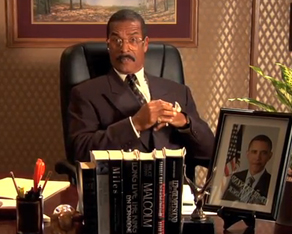
18. Phil Morris, who played Jackie Chiles — Kramer’s lawyer (of “Who told you to put the balm on?” fame) — came back in 2012 to do a series of shorts for Funny or Die, in which he played Jackie Chiles. In the shorts, he says it’s none of your business where he’s been the past 10 years. A framed picture of Obama is on his desk. His character is a parodic version of Jonnie Cochran; the two share the same initials.
19. Following the cyclical tendency of individual episodes in the series, Seinfeld began and ended with a conversation about a shirt button. In fact, the final conversation — between George and Jerry is almost a replica of the one that started the series off.
20. For the first three seasons, the show relied on Jerry’s stand-up act to bookend episodes and as transitional scenes. In seasons 4 and 5, the show’s writers ended the transitional use of his act. During season 6, episode plotlines got denser, so Seinfeld’s stand-up acts at the end of episodes were cut, and by the end of season 7, the act was cut from the show entirely. The stand-up act reappeared only once more in the series finale “The Finale” (season 9, ep.s 23-24), bookending the episode.
21. To increase speculation and secrecy, Seinfeld‘s series finale was filmed in front of a small group of NBC executives and friends of the show, rather than their normal studio audience. All were required to sign written “vows of silence.” Further increasing hype, Seinfeld‘s producers spread false rumors about the ending that included Newman dying and Elaine and Jerry getting married.
22. Larry David secured a $1.7 BILLION dollar syndication deal (wtf) after Seinfeld ended. Of this, he made $250M in 1998, and the amount has been decreasing each year, but payments will be made until the $1.7B is reached.
